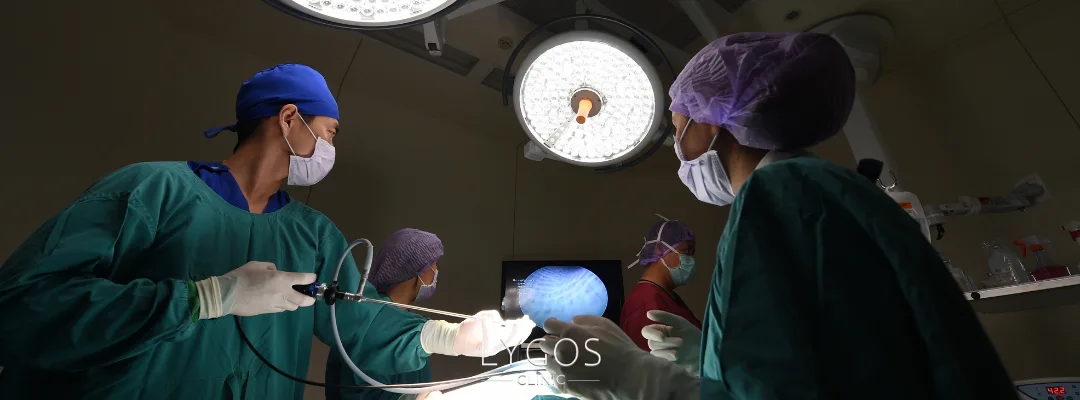Appendicitis Symptoms | Causes and Treatment Methods

Chose Your Topic
Appendicitis Symptoms
Appendicitis is a condition that requires urgent medical intervention, characterized by sudden and severe abdominal pain. The appendix is a small organ located at the beginning of the large intestine in our body. Normally unnoticed, this structure can cause serious health problems when inflamed. Recognizing appendicitis symptoms early is crucial in preventing potential complications. In this article, you will find detailed information about appendicitis symptoms, the characteristics of pain, differences from other abdominal pains, and treatment methods.

What is Appendicitis?
Appendicitis is a medical condition resulting from the inflammation of the appendix. The appendix is a small, finger-shaped organ located at the beginning of the large intestine. While its function is not fully understood, it is thought to contribute to the immune system. However, when the appendix becomes inflamed, it can lead to severe health issues and pose a life-threatening risk if left untreated. Appendicitis symptoms typically manifest as sudden abdominal pain and require emergency surgical intervention.
What Are the Symptoms of Appendicitis?
Appendicitis symptoms may initially appear with mild signs but intensify over time. The most common appendicitis symptoms include:
- Abdominal Pain: The pain initially felt around the navel gradually moves to the lower right side of the abdomen and intensifies.
- Loss of Appetite: A decrease in the desire to eat may occur.
- Nausea and Vomiting: Nausea and vomiting often accompany appendicitis symptoms.
- Fever: A slight fever may occur, which tends to rise as appendicitis symptoms progress.
- Constipation or Diarrhea: Digestive irregularities may arise.
- Difficulty Passing Gas: When the appendix becomes inflamed, bowel functions may also be affected.
These appendicitis symptoms can worsen within a few hours, so it is essential to seek medical attention as soon as possible.
What Does Appendicitis Pain Feel Like?
Among appendicitis symptoms, the most noticeable one is pain. Appendicitis symptoms are usually distinct and characteristic. It starts as a mild discomfort around the navel. Over time, the pain moves to the lower right abdomen and becomes more intense. The pain worsens with movement, coughing, or applying pressure to the abdomen. If applying light pressure to the lower right side of the abdomen and suddenly releasing it causes sharp pain, this could be among appendicitis symptoms.

Differences Between Appendicitis and Regular Abdominal Pain
Abdominal pain can result from various causes. However, appendicitis symptoms can be distinguished from other abdominal pains:
- Point of Origin: Appendicitis symptoms begin around the navel and then shift to the lower right abdomen.
- Severity: Appendicitis symptoms progressively worsen, whereas other abdominal pains usually fluctuate in intensity.
- Pain Worsens with Movement: Appendicitis symptoms intensify with movement, coughing, or sudden actions.
- Bowel Problems: Appendicitis symptoms may be accompanied by constipation or diarrhea.
If abdominal pain is persistent and not mild, it is important to seek medical attention without delay.
What Happens if the Appendix Bursts?
If left untreated, appendicitis symptoms become severe, and the appendix may burst. This situation can lead to serious complications. When the appendix bursts, the infected fluids spread into the abdominal cavity, causing an infection known as peritonitis, which is life-threatening. Among appendicitis symptoms, the following signs may appear:
- Severe and widespread abdominal pain
- High fever
- Confusion or disorientation
- Severe nausea and vomiting
- Hardening and tenderness of the abdomen
Recognizing appendicitis symptoms and seeking medical attention immediately is critical. A ruptured appendix requires emergency surgery, and hospitalization may be necessary for an extended period.

Treatment Methods for Appendicitis
When appendicitis symptoms are observed, the most common and effective treatment method is surgical intervention. Once appendicitis symptoms are confirmed, the following treatment options may be applied:
- Appendectomy (Surgical Removal):
- If appendicitis symptoms are severe, the appendix is surgically removed.
- Laparoscopic or open surgery methods may be used.
- The laparoscopic method offers a faster recovery time.
- Antibiotic Therapy:
- In some mild cases of appendicitis symptoms, doctors may attempt to control the infection with antibiotics.
- However, appendicitis symptoms usually require surgical intervention.
- Hospital Observation:
- If appendicitis symptoms are in the early stages, the patient may be monitored in the hospital.
- The patient's overall condition is assessed to determine the most appropriate treatment method.
Recovery after surgery is typically quick. The patient can return to daily activities within a few days, but heavy lifting and intense physical activities should be avoided.
Appendicitis symptoms can lead to severe health complications if not diagnosed early. If symptoms such as sudden abdominal pain, loss of appetite, nausea, and fever appear, seeking immediate medical attention is crucial. Treatment is generally performed through surgical intervention, and after a successful operation, the patient can regain health in a short time. Early diagnosis and treatment play a key role in preventing complications caused by appendicitis symptoms.
Appendicitis Symptoms Frequently Asked Questions (FAQ)
No, appendicitis does not go away on its own. If left untreated, the appendix can burst and lead to serious complications.
Symptoms can develop within a few hours or appear gradually over several days. The pain usually starts around the navel and progresses to the lower right abdomen.
In rare cases, mild appendicitis can be treated with antibiotics, but most cases require surgical removal of the appendix.
It is recommended to avoid fatty, spicy and hard-to-digest foods after surgery. A light diet with soups and soft foods should be preferred.
Recovery time can vary, but most patients can return to normal activities within 1-2 weeks after laparoscopic surgery. Patients undergoing open surgery may have a longer recovery time.


